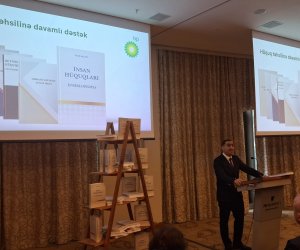Smoking rates are falling as smoke-free alternatives gain ground

In 2022, sales of traditional cigarettes in Japan fell by 45.9% compared with 2014, as consumers increasingly switched to smoke-free alternatives. The data were presented at the annual Technovation conference organized by Philip Morris International (PMI) in Astana, Kazakhstan.
A similar trend has been observed in New Zealand. According to a 2023 study by the country’s Ministry of Health, the smoking rate has dropped by 52.8% since 2014.
In Iceland and Sweden, where smoke-free tobacco products are widely available, the number of smokers has also fallen by 50% since 2014.
The event, which focused on ways to reduce health risks associated with smoking traditional cigarettes, brought together medical professionals, activists, and scientists from Central Asia and CIS countries.
The forum paid special attention to the role of innovation, scientific evidence, and legislative frameworks.
The Role of Innovation
PMI’s Vice President for Communications and Engagement, Tommaso Di Giovanni, emphasized in his opening remarks the importance of technology and scientific research in the development of smoke-free products.
“If the right policies are implemented, we can change the lives of smokers by offering them less harmful alternatives,” he said.
Di Giovanni noted that skepticism toward smoke-free products still exists, but scientific data confirms their potential to reduce harm.
“Skepticism cannot stop future progress. But without cooperation with government and medical institutions, the transition to a smoke-free future cannot be accelerated,” he added.
Myths About Nicotine
PMI’s Scientific Engagement Director for Southeast Asia, CIS, and the Middle East, Tomoko Iida, addressed misconceptions about nicotine in her speech.
According to her, nicotine causes addiction but is not a carcinogen. The main danger lies in the thousands of harmful substances produced during tobacco combustion.
“Scientific studies show that the levels of harmful substances in the aerosol of smoke-free products are 90–95% lower than in cigarette smoke,” Iida emphasized.
She cited Japan as an example: in 2010, cigarette sales in the country totaled 195 billion units, but by 2024, they had dropped to 90 billion. During the same period, sales of heated tobacco products rose from 0.2 billion to 60 billion.
Inhaling cigarette smoke causes more than 7 million deaths annually worldwide. In Sweden, the proportion of smokers has dropped from about 15% to 5% over the past 15 years. Alternatives that deliver nicotine without burning tobacco — such as heated tobacco, electronic cigarettes, and nicotine pouches — can significantly reduce levels of harmful substances.
According to Iida, nicotine is addictive and not entirely harmless. However, the main cause of smoking-related diseases is not nicotine itself, but the many toxic substances formed during tobacco combustion.
Global Perspective
In many countries, tobacco control measures developed decades ago — primarily targeting combustible tobacco products — no longer fully address modern challenges. Technological progress has led to the creation of less harmful smoke-free products (SFPs), including heated tobacco systems (HTPs), electronic cigarettes, and nicotine pouches.
These products can play a positive role in public health by replacing cigarettes for adult smokers who do not quit. However, some governments and health organizations, including the WHO, take a prohibitive stance or equate these products with cigarettes, missing an opportunity.
In contrast, countries that provide access to smoke-free products and inform the public about them have seen significant reductions in smoking rates.
The effectiveness of tobacco control policies should be measured by their impact on smoking rates. Comparative data shows that in countries where alternatives are banned, the number of smokers declines very slowly. Meanwhile, in countries with widespread adoption of SFPs, smoking has decreased by nearly 50% over the past decade.
The WHO has developed a six-step package of measures to help countries build policies against the tobacco epidemic. The goal is to reduce the number of smokers, protect people from secondhand smoke, and decrease tobacco-related illnesses and deaths.
To date, only four countries have fully implemented the measures in this package: Turkey, Brazil, Mauritius, and the Netherlands. Among them, Turkey, Brazil, and Mauritius have banned SFPs, while the Netherlands has allowed alternatives.
In Turkey, the smoking rate in 2022 exceeded 30% and remained at the same level as in 2014.
Additionally, the country faces a problem with illegal tobacco trade: in 2022, illicit products accounted for 27.9% of total consumption.
Compared to Turkey, the figures in Mauritius and Brazil — where alternatives are also banned — are slightly better. In Mauritius, smoking decreased by 6.2%, and in Brazil by 13.9%. However, this is significantly lower than in the Netherlands, where the reduction reached 26%.
These data show that without access to less harmful alternatives, many smokers are not ready to give up cigarettes.
Statistics presented at the conference highlight different trends across countries.
Medical Experts’ Opinions
According to doctors who spoke at the conference, smoke from traditional cigarettes is a direct cause of lung cancer.
“There are eight times more smokers among lung cancer patients than non-smokers,” noted one of the oncologists participating in the forum.
Scientists believe that although smoke-free technologies are not completely risk-free, they can significantly reduce health risks for smokers.
Challenges and Opportunities
PMI representatives emphasized that 80% of people who quit smoking eventually relapse. Therefore, the company believes that offering less harmful alternatives can be an important step toward a future without cigarettes.
The Astana forum concluded with calls to all stakeholders — scientists, journalists, and officials — to ensure access to alternative products and to information about such products.
N.Tebrizli




































 Photo
Photo 



 Video
Video 

